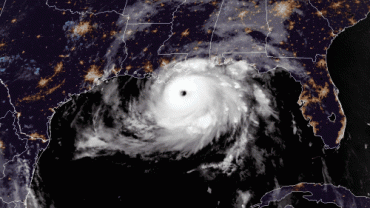Will Hurricane Ida cause carriers to chase FEMA relief loads?

At this time, we do not know the level of destruction that Hurricane Ida will inflict. Hopefully, for the people and property impacted, the damage will be minimal.
To the degree necessary, local, state, and federal emergency management agencies, relief organizations, churches, major corporations, and ordinary people will band together to help those affected by the storm.
However, when major hurricanes have hit the United States in the past (as recently as last week, unfortunately), the Federal Emergency Management Agency (FEMA) is the point agency for the federal government.

Hurricane impact on the trucking industry
Anyone that has been around the trucking industry for some time knows that hurricane relief is a major driver of freight demand. Trucking companies have learned that they can do well helping out, but also make a lot of money in the process.
FEMA and shippers that provide the types of goods that are used in relief will have a massive volume of loads and will be willing to pay top dollar to get their freight to areas that have been impacted by storms.

Earlier today, I tweeted out a few comments about how carriers were going to flock to this freight and warned other shippers that they could see carrier capacity dry up. A CEO of a large carrier texted me in response, challenging my assumptions. He explained that over the past year, fleets have aggressively pursued double-digit contract rate increases, in return for consistency and dependability in capacity planning. Shippers have been willing to accept these rate increases, as long as the carriers provided the capacity promised when they promised it.
In his view, FEMA would be the one struggling this time around to find capacity.
He asked not to be directly identified but wrote:
“The big difference between this and previous cycles is that many carriers have gone through two to three rate increases with each individual shipper in a 12-month timeframe. In aggregate, some have seen 20%+/ rate increases. With those increases came more defined expectations around volumes and order acceptance.
It’s worth it from a monetary perspective but makes it very difficult to drop and chase relief freight. In past cycles, these big events have occurred in the early part of an upcycle or even in a weak market when customer rates were not sufficient. This is a much different scenario. FEMA will seriously struggle to find capacity.”

He went on to write those small carriers that play in the spot market would be the big winners here, able to get really high spot rates and shippers that have not locked in stronger commitments among carriers would also experience disruptions.
In the end, higher spot rates are good for all fleets, even those not playing in the market directly. Shippers seeing high spot rates or running out of capacity will be more willing to accept that double-digit rate increase, fearing that their freight may be left on the docks for weeks at a time.
Again, the FreightWaves staff and I hope that Hurricane Ida’s impact on the people and property of Louisiana (and other states as it moves) is minimal.

